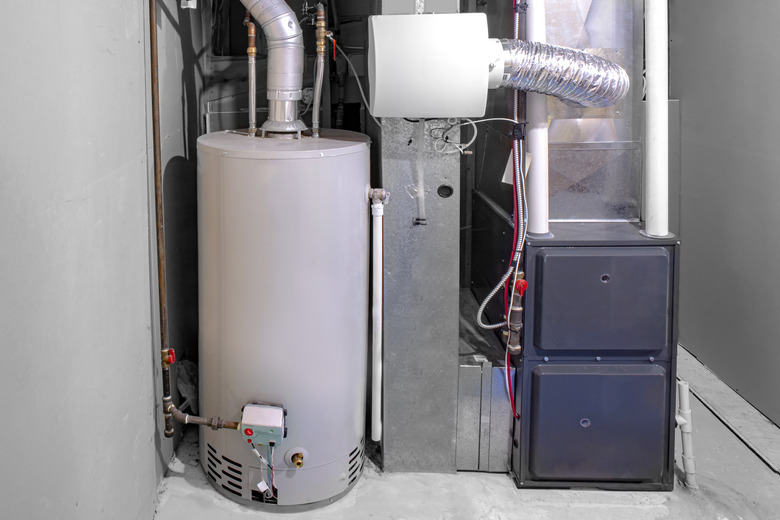What Are The Dangers Of Furnace Soot In The Air?
We may receive a commission on purchases made from links.
A furnace warms your home by distributing heated air through a series of ducts or pipes. Most furnaces are fired by either oil or gas, but others are powered by wood or coal, and under certain circumstances they may emit unburned gases in the form of soot into your living space and the air you breathe. While soot on your walls and other surfaces is unsightly, the health risks it poses are far more serious.
Tip
Breathing soot may result in respiratory and heart damage. In addition, the source may release deadly carbon monoxide gas into the home.
Fireplace or Furnace Soot
Fireplace or Furnace Soot
When any fuel is ignited, gases containing tiny particles of solid matter escape. These gases are produced when hot particles meet cooler air, resulting in condensation. Since they exist in the air inside your home, they are virtually invisible until they start collecting on walls and other surfaces in the form of black soot.
A clear indication of this occurrence is a dark gray stain that becomes visible when you remove a wall hanging. Soot can also sometimes be visible around heat registers, across ceilings and on a furnace itself, which is never a good sign.
Recipe for Disaster
Recipe for Disaster
Soot is primarily carbon, and where it's visible, there's a good chance the air contains unhealthy levels of carbon monoxide gas, a potentially deadly byproduct of soot. All combustible fuels emit carbon monoxide, a problem made worse if your furnace isn't operating properly and is dumping more of this substance into the air you breathe than it should. Indoor levels of the gas should measure the same as outdoor levels.
Inhaling carbon monoxide gas may cause flu-like symptoms while exposure to high concentrations or prolonged exposure to lower concentrations may cause permanent damage or even death. A carbon monoxide detector is a simple way to ensure that this invisible, odorless gas is not filling the air in your home.
Soot and Respiratory Concerns
Soot and Respiratory Concerns
If the air in your home contains a high concentration of soot, its tiny particles can get deep into your lungs and cause inflammation. While short term exposure from candle soot or an occasional smoking fireplace may cause coughing and irritation of your eyes, throat and lungs, breathing sooty air for long periods of time can jeopardize your respiratory system and damage blood vessels. Children are particularly vulnerable as is anyone with a known respiratory or heart condition, such as asthma or chronic obstructive pulmonary disease (COPD).
Protective Measures to Prevent Soot
Protective Measures to Prevent Soot
The danger of carbon monoxide poisoning is an important issue when dealing with furnace soot in the air. While traces of visible soot accumulation are definitely cause for concern, it's what you don't see that matters most. Installing carbon monoxide detectors and smoke alarms or a combination unit near bedrooms and on every floor of the house should go hand in hand with identifying and correcting the source of soot.
In addition, if you use a fireplace, have the chimney and flue cleaned every year to remove soot and ensure that there are no blockages or other damage that affects the flow of smoke out of the house. Wood-burning stoves, heaters and fireplace inserts manufactured before 1990 are less efficient and may also leak soot into the house; consider replacing with more efficient units.
When using your fireplace or wood-burning heater, only use dry, seasoned wood that burns well. A wood moisture meter ensures that the wood is dry enough to be safe for use. Green or unseasoned firewood produces more smoke, soot and particulate matter that coat the inside of the chimney as well as your walls and lungs.
